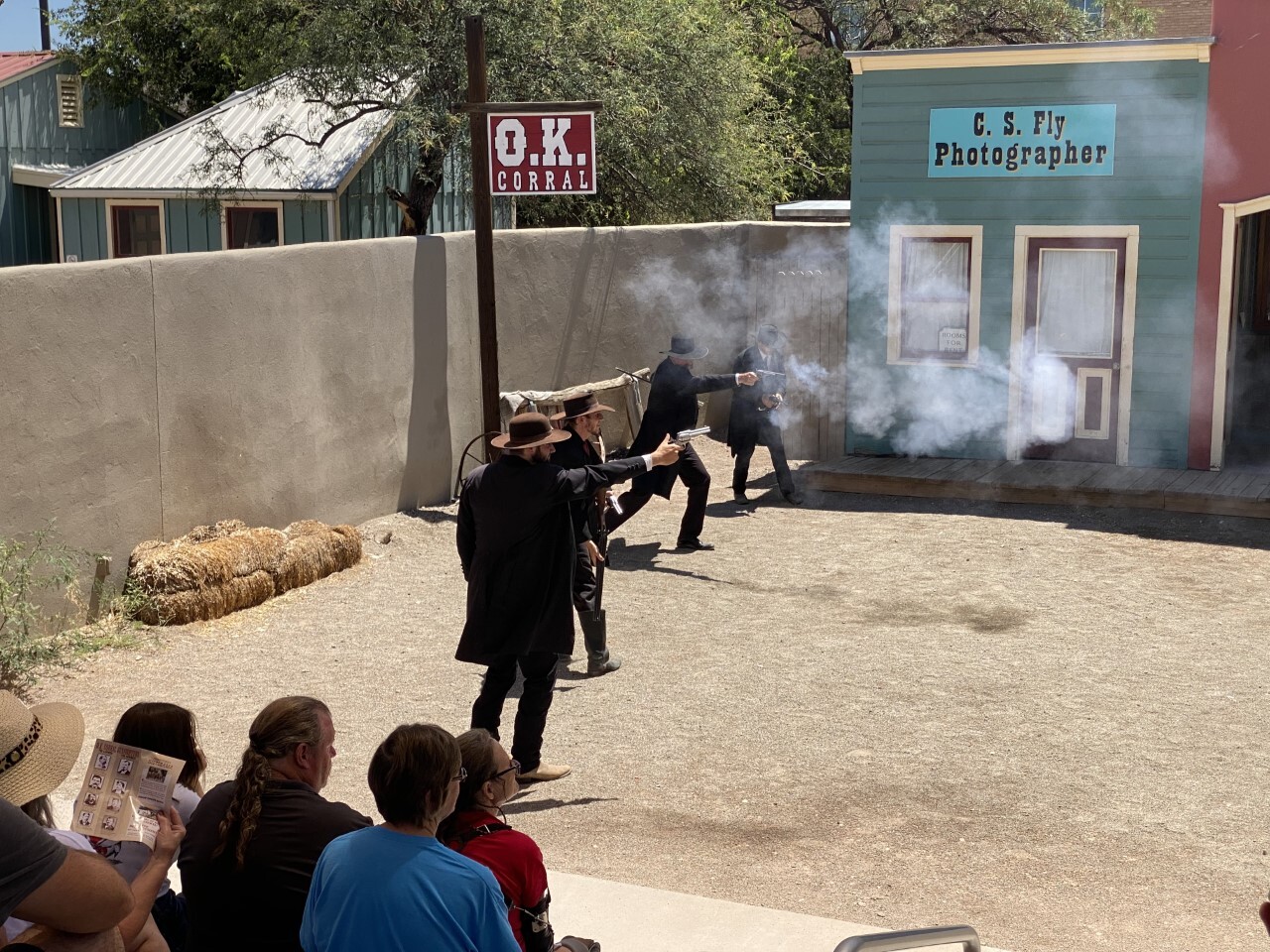MORE LEGEND OR LIE
- The Tombstone Thunderbird. Legend or Lie?
- La Llorona. Legend or Lie?
- Legendary, but lost: The search for the Lost Dutchman Mine
- Chupacabra. Legend or Lie?
——
The Gunfight at the OK Corral has been immortalized by Hollywood in major motion pictures like Kurt Russell's 1993 classic Tombstone, and Kevin Costner's 1994 film Wyatt Earp. But did those films accurately portray the famous gunfight?
Tombstone historian Don Taylor says Hollywood has given us a false sense of what actually happened that late October afternoon in 1881.
"It's all based on the movies," Taylor said. "It's the entertainment business. It's taken the story of Tombstone and completely bastardized it into 30 seconds on Freemont Street. It's all about the gunfight. It was so much more."

Taylor says 1881 Tombstone gets a bad rap.
"Tombstone was not the crazy, wild, gun-toting, shoot 'em up place that everybody makes it out to be," he said. "It was very modern and very sophisticated and extremely wealthy. Thirty-seven million dollars, in 1880 dollars, worth of silver was mined here. That's over a billion dollars today."
Another lie that eventually became legend, the actual spot of the gunfight. It never happened at the OK Corral, taking place down Fremont Street from the OK Corral, in a narrow vacant lot.
"For 50 years the folks here in town and in the newspapers called it the Fight on Fremont Street. Because that's where it took place," Taylor said. "When Stuart Lake published Wyatt Earp Frontier Marshal in 1931, it became known as the Gunfight at the OK Corral. Hollywood ran with it and we've been stuck with it ever since."
Today in Tombstone, you can catch a reenactment of the gunfight at the actual site of the OK Corral.

Taylor says it gives visitors a much more historically accurate interpretation than Hollywood.
"It's close. It's probably the closest you'll see of anything, whether it's television or movies or live."
It was a cold, late October afternoon when Doc Holliday and the Earps faced off against the Clanton-McLaury gang. It was raining and sleeting, too.
"What I tell the tourists is there wasn't really any good guys out here. There was a lot of people that came here to make money and that was all they cared about," said Tim Christie, one of the OK Corral Gunfight performers. "There was no friendship between the Cowboys and the Earps, but for their own reasons, they were both pretty bad parties. The Cowboys broke the law in many ways and so did the Earps."

The movies about Tombstone also miss the mark for failing to accurately set up the story behind the bad blood between the Earps and Cowboys, according to Don Taylor.
"There were so many issues involved with the Cowboys and the Earps in that period of Tombstone history, it's got so many different levels, it comes down to the fact that the Cowboys were Southern Democrats and the Earps were Northern Republicans," he explained.
Tim Christie fills in some of the history:
"The Earps were kind of pushing the Cowboys around. They were changing the rules and making it so it was how the Earps wanted it," he said. "Half the town and the Cowboys said no, we don't want that. So, it was very politically motivated with you can have guns, you can't. You can do this, you can't. The town was really split in half because of it."
The town was also divided after the 30 shot, 30 second Fight on Fremont Street, which left three Cowboys dead. Tombstone remained divided after Doc Holliday and the Earps were arrested days later. A month-long preliminary hearing before the Justice of the Peace followed.
Historian Don Taylor says Wyatt Earp's statement during the hearing put an end to the misconception that Doc Holliday fired first.
"Everybody says that was the shotgun. Wyatt in his testimony says he and Billy Clanton fired the first shots almost simultaneously," Taylor told KGUN 9. "There was that pause and then the fighting became general."
The Cowboys side of the story fell apart when Ike Clanton testified.
"That was one of the dead giveaways," Taylor said. "Ike testified on two different days. The story changed on both days."
On November 30, 1881 the Justice of the Peace ruled that Virgil Earp, as the lawman in charge that day, had acted within his office and that there was not enough evidence to indict the men.
Wyatt Earp eventually headed west to California.
"He was only here for 28 months. They were 28 important months for Tombstone and Cochise County history," Taylor said.
In reporting the gunfight, The Tombstone Epitaph said, "Wyatt Earp stood up and fired in rapid succession, as cool as a cucumber, and was not hit." He was never wounded in any of his gunfights.
Taylor quoted a different line about Earp to KGUN, "Later in L.A. somebody interviewed him and said what's the key to winning a gunfight? He said you got to take your time but do it in a hurry."
----
Special thanks to the The Tombstone Historama Corp. for their work on this project.
- Wyatt: Mark Spirz
- Virgil: David Moore
- Morgan: Roger Moffit
- Doc: Tim Christie
- Frank: Robert Fields
- Tom: Daylen Hunt
- Billy: Jordon Schaaf
——-
Pat Parris is an anchor and reporter for KGUN 9. He is a graduate of Sabino High School where he was the 1982 high school state track champion in the 800 meters. While in high school and college, he worked part-time in the KGUN 9 newsroom. Share your story ideas and important issues with Pat by emailing pat.parris@kgun9.com or by connecting on Facebook, Twitter, and Instagram.






























